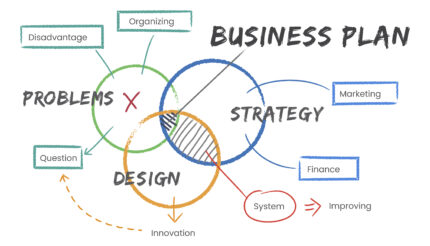Scale up Smartly: Navigating Growth Opportunities in a Competitive Market
Scale up smartly; In the competitive landscape of today’s market, the quest for sustainable growth presents both a challenge and an opportunity for businesses. As companies strive to scale up smartly, navigating the myriad of growth opportunities requires a strategic approach that encompasses innovation, market insight, and a deep understanding of consumer needs.
In an era where competition is fierce, “Scale up Smartly: Navigating Growth Opportunities in a Competitive Market” delves into the key strategies and insights essential for businesses aiming to expand their footprint. From leveraging digital advancements to harnessing data-driven decision-making, this article offers practical guidance on carving a path to growth amidst intense competition.
Incorporating the essence of [Brand Voice], the insights provided cater to businesses seeking to elevate their competitive edge while staying true to their brand identity. By recognising the nuances of the market and capitalising on untapped potential, companies can position themselves for sustained success in a fiercely competitive arena.
Understanding business growth opportunities
Understanding the dynamics of business growth opportunities is fundamental to devising a successful strategy for expansion. It involves recognising the various avenues through which a business can grow, whether through diversification, market penetration, product development, or market development. Each avenue presents its unique set of challenges and opportunities, demanding a nuanced understanding of the market and consumer behaviour. By comprehensively grasping the potential growth opportunities, businesses can lay the groundwork for a robust and sustainable expansion strategy that aligns with their long-term objectives.
Expanding into new markets or introducing new products requires a deep understanding of consumer needs and preferences. This entails conducting thorough market research to identify unmet needs, emerging trends, and areas of potential growth. By gaining insights into market demand and consumer behaviour, businesses can position themselves to capitalise on growth opportunities effectively. Moreover, by staying attuned to industry trends and competitive dynamics, companies can proactively identify and seize opportunities for expansion, thereby setting the stage for sustainable growth in a fiercely competitive market.
Identifying competitive market dynamics
In a competitive market, understanding the dynamics of competition is crucial for businesses aiming to scale up smartly. This involves not only analysing the competitive landscape but also discerning the factors that drive competition, such as pricing, product differentiation, and market positioning. By gaining a comprehensive understanding of the competitive forces at play, businesses can formulate strategies to differentiate themselves and carve out a distinctive market position. This, in turn, will enable them to identify and capitalise on growth opportunities that align with their unique value proposition.
Market dynamics also encompass the broader economic and industry-specific factors that influence competition. These factors may include regulatory changes, technological advancements, and shifts in consumer preferences. By staying abreast of these dynamics, businesses can adapt their growth strategies to navigate the evolving competitive landscape effectively. Moreover, by proactively monitoring market dynamics, companies can identify potential threats and opportunities, allowing them to make informed decisions that drive sustainable growth in a fiercely competitive market environment.
Market research for growth scalability
Conducting comprehensive market research is a cornerstone of scalable growth for businesses operating in a competitive market. It involves gathering and analysing data related to market trends, consumer behaviour, and competitive positioning. By leveraging market research insights, businesses can identify untapped market segments, unmet consumer needs, and areas of potential growth. This, in turn, provides the foundation for developing targeted growth strategies that resonate with the evolving market landscape, thereby positioning the business for sustainable expansion.
Market research also enables businesses to gain a deeper understanding of consumer preferences, purchasing behaviour, and brand perceptions. By delving into consumer insights, businesses can tailor their products, services, and marketing efforts to align with the needs and aspirations of their target audience. Furthermore, market research empowers businesses to make data-driven decisions, mitigating the risks associated with growth initiatives and maximising the efficacy of their expansion efforts. Ultimately, leveraging the power of market research equips businesses with the intelligence needed to navigate the complexities of a competitive market and unlock scalable growth opportunities.
Developing a growth strategy
Developing a robust growth strategy is essential for businesses aiming to scale up smartly in a competitive market. This involves formulating a cohesive plan that outlines the objectives, tactics, and milestones for achieving sustainable expansion. A well-crafted growth strategy takes into account the business’s strengths, weaknesses, opportunities, and threats, providing a roadmap for capitalising on growth opportunities while mitigating potential risks. Moreover, a growth strategy should encompass a clear understanding of the target market, competitive positioning, and the unique value proposition that sets the business apart from its rivals.
A comprehensive growth strategy also entails aligning the organisation’s resources, capabilities, and culture with the overarching goal of expansion. This involves fostering a growth-oriented mindset throughout the organisation, empowering employees to contribute to the realisation of the growth vision. Additionally, a robust growth strategy should factor in contingencies and adaptability, recognising that the competitive market landscape is dynamic and subject to change. By developing a growth strategy that is agile, responsive, and laser-focused on sustainable expansion, businesses can chart a course for growth that transcends the challenges posed by a fiercely competitive market.
Leveraging technology for scalable growth
In the digital age, leveraging technology is paramount for businesses seeking scalable growth in a competitive market. This involves harnessing cutting-edge digital tools and platforms to optimise operations, enhance customer experiences, and drive innovation. From utilising data analytics for informed decision-making to embracing automation for streamlined processes, technology serves as a catalyst for unlocking growth opportunities and gaining a competitive edge. By integrating technology into every facet of their operations, businesses can position themselves to scale up smartly and thrive in an intensely competitive market environment.
The proliferation of digital channels also presents businesses with unprecedented opportunities to reach and engage with their target audience. By leveraging digital marketing, social media, and e-commerce platforms, businesses can amplify their brand presence, foster meaningful connections with consumers, and drive sales growth. Furthermore, technology allows businesses to gain real-time insights into market trends, consumer behaviour, and competitive dynamics, empowering them to make data-driven decisions that fuel sustainable expansion. By embracing technology as a strategic enabler of scalable growth, businesses can transcend the constraints of a competitive market and position themselves for long-term success.
Navigating challenges in scaling up
Navigating the challenges inherent in scaling up is a pivotal aspect of pursuing growth opportunities in a competitive market. Scaling a business presents multifaceted challenges, ranging from operational complexities to resource constraints and market uncertainties. By anticipating and addressing these challenges proactively, businesses can mitigate the risks associated with expansion and position themselves for sustainable growth. This may involve optimising internal processes, enhancing organisational capabilities, and fostering a culture of agility and adaptability that is conducive to scaling up smartly.
Moreover, navigating challenges in scaling up requires a keen awareness of the potential pitfalls and roadblocks that may impede growth initiatives. This includes recognising the impact of market volatility, competitive pressures, and external factors that could disrupt expansion efforts. By developing contingency plans, scenario analyses, and risk mitigation strategies, businesses can fortify their resilience in the face of challenges, ensuring that their growth trajectory remains steady and sustainable. Ultimately, by navigating the challenges of scaling up with strategic foresight and resilience, businesses can position themselves to capitalise on growth opportunities and thrive in a fiercely competitive market.
Streamlining operations for growth
Streamlining operations is instrumental in facilitating scalable growth for businesses operating in a competitive market. This involves optimising internal processes, enhancing efficiency, and eliminating redundancies to create a lean and agile organisational structure. By streamlining operations, businesses can unlock resources, reduce costs, and enhance their capacity to scale up smartly. This may encompass reengineering workflows, adopting technology-driven solutions, and fostering a culture of continuous improvement that is geared towards maximising operational effectiveness.
Furthermore, streamlining operations empowers businesses to reallocate resources towards growth initiatives, innovation, and market expansion. By eliminating inefficiencies and bottlenecks, businesses can free up capital, talent, and time to invest in strategic growth endeavours. This, in turn, enables businesses to execute their growth strategies with precision and agility, positioning them to capitalise on emerging opportunities and gain a competitive advantage in the market. Ultimately, by streamlining operations for growth, businesses can enhance their capacity to scale up smartly while navigating the intricacies of a fiercely competitive market.
Marketing and branding for scalable growth
Effective marketing and branding play a pivotal role in driving scalable growth for businesses in a competitive market. This entails crafting compelling brand narratives, engaging with consumers across diverse touchpoints, and creating a differentiated market positioning that resonates with the target audience. By developing a cohesive marketing and branding strategy, businesses can elevate their brand visibility, foster brand loyalty, and drive customer acquisition and retention. This, in turn, positions the business for sustainable growth by enhancing its competitive edge and market relevance.
In the digital era, leveraging digital marketing channels is critical for reaching and engaging with a broader audience. By harnessing the power of social media, content marketing, and search engine optimisation, businesses can amplify their brand presence, drive traffic, and generate leads, thereby fueling scalable growth. Furthermore, effective branding that communicates a compelling value proposition and resonates with consumer aspirations can create a powerful competitive advantage, enabling businesses to stand out amidst intense competition. By prioritising marketing and branding for scalable growth, businesses can fortify their market position and capitalise on growth opportunities in a fiercely competitive market.
Innovation and adaptation for competitiveness
Innovation and adaptation are linchpins of competitiveness for businesses seeking scalable growth in a competitive market. This involves fostering a culture of innovation, embracing change, and continually evolving to meet the evolving needs of the market and consumers. By prioritising innovation, businesses can develop cutting-edge products, services, and solutions that resonate with consumer demands, thereby creating a unique value proposition that sets them apart from their rivals. Moreover, by adapting to market dynamics, technological advancements, and consumer trends, businesses can position themselves to remain agile and responsive in a fiercely competitive market.
Furthermore, innovation and adaptation empower businesses to anticipate and capitalise on emerging trends and disruptive forces that shape the competitive landscape. By fostering a culture of creativity and experimentation, businesses can drive continuous improvement, develop novel solutions, and pivot in response to market shifts. This, in turn, enables businesses to stay ahead of the curve, seize growth opportunities, and sustain their competitive advantage amidst intense competition. Ultimately, by prioritising innovation and adaptation as core tenets of competitiveness, businesses can position themselves for scalable growth and long-term success in a fiercely competitive market.
Conclusion: Sustaining growth in a competitive market
In conclusion, the pursuit of scalable growth in a competitive market demands a strategic approach that encompasses a deep understanding of growth opportunities, market dynamics, and consumer behaviour. By leveraging technology, streamlining operations, and prioritising innovation and adaptation, businesses can position themselves to scaling up smartly and thrive amidst intense competition. Furthermore, effective marketing and branding, supported by comprehensive market research and a robust growth strategy, are instrumental in driving sustainable expansion and fortifying the business’s competitive edge.
Ultimately, sustained growth in a competitive market requires businesses to navigate the complexities of expansion with resilience, foresight, and a commitment to continuous improvement. By embracing the insights and strategies outlined in this article, businesses can enhance their capacity to capitalise on growth opportunities, differentiate themselves in the market, and position themselves for long-term success. Through a concerted focus on scalable growth, businesses can not only navigate the challenges of a competitive market but also emerge as industry leaders, driving innovation, and setting new benchmarks for excellence.






